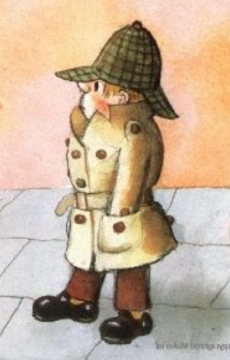Four to Six Years Old
This page lists books to read to children or for them to read to themselves. For books about children and childraising, see Education.
In addition to the books listed here, an excellent source of both book lists and information about children's evolving need for books is Babies Need Books.
Many books listed on the pages for earlier ages continue to be suitable for this age, and may be appreciated with a growing sophistication.
Most of these books continue to be suitable for reading at one sitting, but some longer books are introduced, books that should be read in installments.
Books
- Aesop's Fables by . Short, literate stories, each with a moral, allowing a child to get the idea of drawing a generalization from a story. The brevity makes them understandable as wholes and a manageable size for older children to read.
- Another Mouse to Feed by . When yet another mouse baby arrives in the family, mom and dad become overtaxed, so all the other children pitch in industriously and soon all is prosperity. (out-of-print, see sources.)
- Bob Books by . Five boxed sets of small books use simple stories and clear illustrations to guide a learning phonics student from the basic letter sounds to long vowels and more advanced letter combinations.
- Chanticleer and the Fox by . A rooster learns the danger of following flattery.
- Cinderella by . Beautiful illustrations and typography partner with a text adapted from the The Arthur Rackham Fairy Book and Andrew Lang's The Blue Fairy Book.
- D'Aulaires' Book of Greek Myths by . The Greek myths told for young readers. The illustrations and stories convey much of the original, pagan flavor, values and detail.
- Dinosaur Pizza by . Jill has trouble pleasing her new friends. Ingeniously, she figures out how to meet their wacky tests. She also realizes that she has her own values, distinct from theirs.
- Dogger by . A loved toy is lost and then found.
- Down Comes the Rain by . All about water vapor, evaporation, slow, sleet, and -- of course -- rain.
- Greek Myths for Young Children by . Greek myths condensed and illustrated with dramatic, colorful drawings.
- Happy Birthday, Sam by .
- Hector's Hiccups by . Hector has hiccups. Can his brother and sister cure them? Many cures are tried, but Hic! Hic! the hiccups are back. What will work?
- I Wish that I had Duck Feet by . A boy wishes that he had animal parts, but realizes that while they would bring advantages, they would also cause him real problems, and concludes that being himself is the best thing of all.
- Katie Morag by . Katie Morag McColl lives on the island of Struay, in Scotland. Her adventures are adventurous, and never sacharine or preachy.
- Kids Baking by . Cookies, cakes, pies and breads that kids can bake. Real recipes using real equipment give children a clear sense that they can create something important.
- Little Gorilla by .
- Pegasus by . The young hero, Bellerophon, is condemmed by an envious King to undertake the dangerous mission of slaying the Chimera. First, he must win the trust of the winged steed Pegasus, who can soar through the clouds and has been tamed by no man. Through bravery and skill, Bellerophon triumphs.
- Punia and the King of Sharks by . Punia is brave and resourceful as he defeats the King of Sharks repeatedly and secures for himself and his mother the cave of delicious lobsters.
- Rapunzel by . An accurate retelling of the story of a young woman locked in a magical tower by an enchantress, marrying and eloping with a prince, pursued, lost, seeking and finally finding each other.
- Read-Aloud Poems for Young People, An Introduction to the Magic and Excitement of Poetry by .
- Rhymes for Annie Rose by . Cheerful rhymes about and for Annie Rose and her family. (out-of-print, see sources.)
- Saturday Night Jamboree by . When Mom and Dad go dancin', the baby sitters whip up rootin', tootin' entertainments. But the best night of all is Saturday, when Mom and Dad have a jamboree at home.
- The Children's Book of Heroes by . William Bennett has selected for this book stories of heroes that a child might look up to, people of courage and high moral stature. But, you must use this book selectively because the morals depicted range from the selfish, this-worldly orientation of Greek myths to the altruism of Father Flanagan and Mother Theresa. Fortunately, the former predominate.
- The Iliad and the Odyssey by . The entire Iliad and adventures of Odysseus, in brief, with colorful, cartoon illustrations.
- The Kid's Cookbook, A great book for kids who love to cook! by . Enticing photographs and clear directions for yummy foods that a child can make (with adult supervision and/or assistance).
- The Lighthouse Keeper by . Industrious Mr Grinling, his clever wife, Mrs Grinling, and masterful cat, Hamish, tend the lighthouse, get into one scrape after another, but always find a solution.
- The Little House Series, (9-Book Boxed Set) by . These fascinating stories recount the life of Laura, Mary, baby Carrie, Ma and Pa from the late 1870s in a log house in Wisconsin, to a sod house on the Kansas prairie and on as they grew up. They are readable by a young though not beginning reader. Children from about four on can enjoy having these read to them, though only the first three books are suitable for the youngest listeners.
- The Story about Ping by . Ping the duckling does not return, as he should, to his houseboat one evening, but hides instead to avoid a spank. The boat sails away without him; he then has several adventures, and is nearly a dinner, before discovering his houseboat again. This time, he chooses to be home, even at the cost of a little spank.
- The Tales of Grandpa Cat by . Three cat children visit their grandpa at the retirement home, expecting to be bored, but instead discover the adventurous histories of the residents and come to a new appreciation of their grandparents. (out-of-print, see sources.)
- The Wizard of Walloby Wallow, Jack Kent. A mouse, tired of being a mouse, wants to be something else. After the Wizard gives him an unlabled bottle of potion that will turn him into "something else," he weighs-up the advantages of other animals versus his own values, and concludes that he likes being himself. (out-of-print, see sources.)
- Titch by .
- Tomie de Paola's Favorite Nursery Tales by . Stories, poems and fables for children, including several from Aesop, Stevenson and Lear.
- Trouble with Trolls by . A young girl repeatedly outwits trolls trying to steal her dog. With marvelous, detailed illustrations.
- Henry and Mudge by . Henry and his big dog Mudge love each other and have cheerful adventures in each of this series of chapter books.
- Nate the Great by . Nate the Great uses confidence, observation and logic to solvea a baffling puzzle in this, the first of a long series of clever stories.
- One Morning in Maine by .
- Puss in Boots by . Puss, through ingenuity, turns her master from a penniless orphan to a lord. Beautiful illustrations augment this classic French tale.
- Railways and Trains by . The exciting story of the invention and variety of trains.
- The Golden Mare, the Firebird and the Majic Ring by . A brave hunter seeking adventure wins a golden mare, captures the firebird and finally, through his cleverness, wins the hand of the most beautiful girl in the kingdom and the kingdom itself. (out-of-print, see sources.)
- The One-Eyed Giant, and other monsters from the Greek Myths by . Ten tales of monsters and the heros who defeated them. (out-of-print, see sources.)
- The Robber Baby, Stories from the Greek Myths by . Tales of Hermes, Apollo, and other gods, heros and adventures. (out-of-print, see sources.)
- The Trojan Horse. A short book designed for early readers, it tells the story of Odysseus's defeat of the Trojans.
- Tom Thumb by . Tom Thumb, though small, through cleverness and bravery dispells the most fearsome giant and becomes a knight of King Arthur.
- What Do You Say, Dear? by . Hilarious settings and winsome drawings introduce children to manners.
- Ancient Greece and the Olympics, Magic Tree House Research Guide by . A first-reader history book of Ancient Greece, covering the culture, religion, and the olympics.
- Saint George and the Dragon by . Saint George bravely fights and defeats a horrible dragon to save a kingdom.
- Green Eggs and Ham by . With unmistakable characters and signature rhymes, Dr. Seuss’s beloved favorite has cemented its place as a children’s classic. Kids will love the terrific tongue-twisters as the list of places to enjoy green eggs and ham gets longer and longer...and they might even learn a thing or two about trying new things!
- On Beyond Zebra by . A deligntful adventure in the value of not being stuck to the conventional, but viewing the world as an exciting opportunity for discovery. Out of print, withdrawn by the publisher, for unexplained reasons having somethign to do with political sensitivity. (out-of-print, see sources.)
- The Five Hundred Hats of Bartholomew Cubbins by . As topical today as when it was first published in 1938, The 500 Hats of Bartholomew Cubbins is the story of a young boy (the same one featured in the Caldecott Honor Award-winner Bartholomew and the Oobleck) and his unjust treatment at the hands of a king. Written in unrhymed prose, The 500 Hats is one of Dr. Seuss's earliest works, and while it may not be as well-known as his other stories, the book addresses subjects that we know the good doctor was passionate about throughout his life: the abuse of power (as in Yertle the Turtle and Horton Hears a Who); rivalry (as in The Sneetches); and of course, zany good humor (as in The Cat in the Hat and all the other books he wrote and illustrated)!
- The Sneetches and Other Stories by . The story of the Star-bellied Sneetches and their star-less friends is a perfect guide for kids growing up in today’s multicultural world. This classic is joined by equally entertaining tales: “The Zax,” a humorous take on the art of compromise; “Too Many Daves,” which shows kids that sometimes standing out is better than blending in; and “What Was I Scared Of?,” which demonstrates how empathy can transform a stranger into a friend. In these four energetic stories, Dr. Seuss challenges the idea that we have to look the same or be the same to find common ground. Full of Dr. Seuss’s signature rhymes and lively humor, this story collection is a must-have for any reader, young or old.
- What Was I Scared Of? by . What's a pair of empty green trousers doing by itself in the woods? Or riding a bike through town? The narrator of What Was I Scared Of? does not want to find out. The spooky pants give him the creeps! This Seussian gem from The Sneetches and Other Stories shines on its own as it delivers a timeless message about fear and tolerance. Perfect for slumber parties and perusal by flashlight--it comes with a sheet of spooky glowing stickers bound inside as an added bonus!
- Yertle the Turtle by .
Audio Recordings
- Ballet Stories by . Coppelia, Giselle, Sleeping Beauty, the Nutcracker, Swan Lake
- Celtic Treasures by . Ancient stories of bards and warriors told with passion and sensitivity.
- Greek Myths by , Greathall Productions. Kign Midas, Arachne, Perseus, Medusa and Hercules come alive in this telling of the classic Greek myths.
- Heros in Mythology, Theseus, Prometheus, Odin by .
- King Arthur and His Knights by .
- Philadelphia Chickens by . How silly can you get? 17 and 1/2 songs from a musical review featuring a bovine chorus line, jazz chickens, intermezzo ardvarks, rope-skipping dinosaurs and more!
- Rhinoceros Tap by . Cheery, tappy dance tunes and other clever songs featuring personable animals.
Videos
- Dumbo by . Politically incorrect and all the better for it. Dumbo is jeered by others but learns that bravery and conviction will allow him to triumph.
- George Shrinks. George is resourceful, optimistic and brave. He is also about four inches tall, which in this video series is not a handicap but an opportunity for adventure.
- Lilo and Stitch by . An orphaned girl finds a best friend in an outcast alien who discovers that he can be good, not destructive.
- Monsters, Inc. by . Two monsters who make a living scaring children discover that they love children, and that selfish love is stronger than envy and dishonesty.
- Sagwa, The Chinese Siamese Cat by . A court cat in ancient China learns various lessons in bravery, honesty and self-reliance.
- Skeleton, Eyewitness. Animals, birds and fish all have skeletons. See what purpose is served by the skeleton and the history of our knowledge about it,
- Toy Story by . Woody overcomes his jealosy and Buzz Lightyear his delusions when they realize that the values they hold in common are more important than their rivalry.
- Toy Story 2 by . Woody discovers that a finite life full of values is better than a value-empty immortality.
- Wallace & Gromit. Gromit, the intelligent, expressive and tolerant dog, lives with his master, Wallace the inventor. They travel to the moon for a cheese holiday in a home-built rocket, survive techno-trousers controlled by a diabolical boarder, and defeat a sheep rustling scheme that hides something even worse than its already sinister surface.
- Flight, Eyewitness. Birds fly, even some mammals and reptiles fly, and, of course, man knows how to fly. This video explores the variety and history of flight. Like the other videos in the Eyewitness series, it is visually rich but shallow on explanation and mixes science and myth carelessly.
- Weather, Eyewitness. Storms, clouds, sunshine, rain, wind and fair weather: all of the variety and effects of weather. Like the other videos in the Eyewitness series, it is visually rich but shallow on explanation and mixes science and myth carelessly.
Links
- Euclidia – Euclidean Constructions Made Fun to Play With, Euclidea is all about building geometric constructions using straightedge and compass. About doing it the fun way. With Euclidea you don’t need to think about cleanness or accuracy of your drawing, Euclidea will do it for you. But it’s also a game. A game that values simplicity and mathematical beauty. Find the most elegant solution, the one, which is built in the least possible moves, and you’ll get the highest score.
- Kids Need History Early – You want to include history in your homeschooling curriculum, but you face a lot of tough questions. At the top of the list are what to teach, and how. But if you want to help your child to appreciate history, an equally important question is when to start teaching it. The sooner children start learning the right history, the greater the chance they will learn to love it.
- VanDamme Academy Favorite Books by Grade Level – An excellent list of books for children, grouped by the grade level they are typically appropriate for.
- Why History? – Why should kids study history? Why should anyone, for that matter? Here is why.
copyright © 2024 Andrew Layman, all rights reserved, 1/15/2024 6:08:03 PM, Topic: Four to Six Years Old, http://www.strongbrains.com
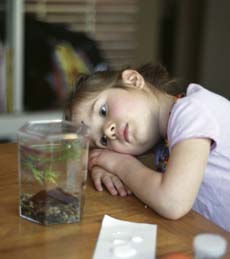
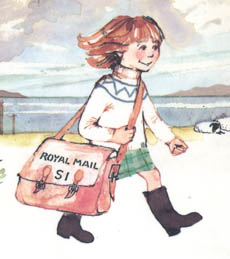
Katie Morag Delivers the Mail
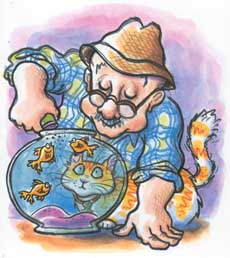
Mr Putter and Tabby Feed the Fish
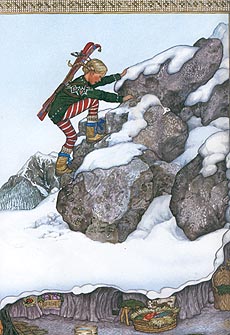
Treva climbing Mount Baldy, from Trouble with Trolls
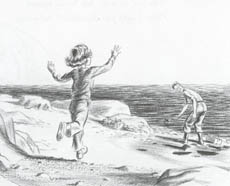
Sal and her Dad, from One Morning in Maine




